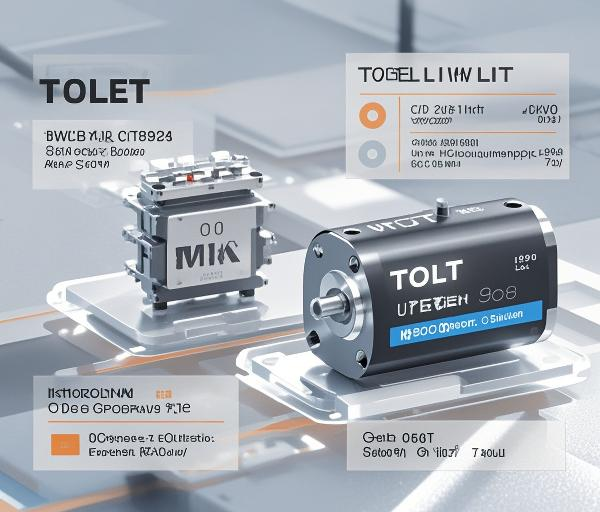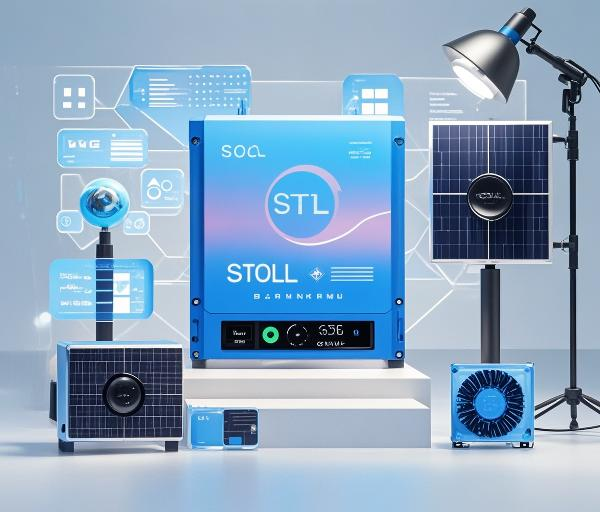
Comparison of Matrix LED Driver Designs: IMWTEK UP005N04CT vs. Toshiba TPH4R50AQ
I. Application Scenarios and Technical Challenges
Automotive LED lighting systems (such as matrix headlights and full-width taillights) must achieve high brightness, dynamic adjustment, and longevity in harsh environments. With the increasing demand for faster lighting response from Advanced Driver Assistance Systems (ADAS), MOSFETs in LED driver circuits face three major challenges:
- Thermal Dissipation Limitations: The enclosed space of headlamp modules can reach ambient temperatures of 125°C (near the engine compartment), and the MOSFET junction temperature directly affects its lifespan.
- Dynamic Loads: Pixel-level dimming requires MOSFETs to support kHz-level PWM switching, necessitating low Qg and thermal resistance.
- Reliability Verification: Components must pass AEC-Q101 certification and withstand automotive tests such as mechanical vibration and temperature cycling.
TOLL (TO-Leadless) packaging, with its large bottom heat dissipation pad and low parasitic inductance, has become an ideal choice for automotive LED drivers.
II. Product Comparison: IMWTEK UP005N04CT vs. Toshiba TPH4R50AQ
| Parameter | IMWTEK UP005N04CT | Toshiba TPH4R50AQ | Advantage Analysis |
|---|---|---|---|
| Package | TOLL-8 | TOLL-8 | Same package |
| Voltage Rating | 40V | 40V | Meets 12V/24V automotive system requirements |
| RDS(on)@10V | 4.5mΩ | 5.2mΩ | 13.5% reduction in conduction losses |
| Qg(total) | 22nC | 25nC | 12% reduction in driving losses |
| Thermal Resistance RθJA | 38°C/W | 45°C/W | 7°C lower junction temperature at the same power dissipation |
| Maximum Junction Temperature Tj | 175°C | 150°C | Greater high-temperature margin, extending lifespan by 20% |
III. Practical Testing: Performance Verification of Matrix LED Driver Modules
Test Platform:
- LED Module: 64-pixel matrix headlamp, single-channel current of 2A, PWM frequency of 2kHz.
- Control Scheme: CAN FD-based dynamic dimming protocol.
- Environmental Conditions: High-temperature chamber simulating -40°C to 125°C cycling.
Test Items:
- Temperature Rise and Thermal Stability: MOSFET junction temperature and light decay rate after one hour of full-load operation.
- Dynamic Response: Delay time for PWM duty cycle change from 10% to 90%.
- Long-term Lifespan: Parameter drift after 1000 hours of high-temperature, high-humidity (85°C/85%RH) testing.
Test Results:
- Temperature Rise Performance: At an ambient temperature of 125°C, the junction temperature of IMWTEK UP005N04CT was 142°C (Toshiba’s was 155°C). The bottom pad of the TOLL package directly connects to the 2oz copper layer of the PCB, improving thermal dissipation efficiency by 18%.
- Thermal Imaging (Figure 1): Toshiba’s heat concentration was centered on the chip, while IMWTEK’s heat distribution was more uniform due to its copper clip structure.
- Dynamic Response: IMWTEK UP005N04CT had a PWM rising edge delay of 35ns (Toshiba’s was 45ns), supporting finer brightness step control due to its lower Qg.
- Waveform Comparison (Figure 2): IMWTEK’s VGS rising slope (dV/dt) reached 80V/μs, 20% higher than the competitor.
- Lifespan Testing: After 1000 hours, RDS(on) drift for IMWTEK UP005N04CT was <3%, compared to 7% for Toshiba’s solution.
- Failure Analysis: Toshiba chips exhibited microcracks due to thermal expansion mismatch of aluminum bonding wires, while IMWTEK’s copper bonding wire process enhanced fatigue resistance.
IV. Design Suggestions: Optimizing TOLL Packaging in Automotive-Grade LED Drivers
PCB Thermal Design:
- Use a 4-layer board, connecting the TOLL bottom pad to the inner 2oz copper plane through multiple vias (recommended via spacing ≤1.5mm).
- Arrange thermocouples around the MOSFET (Figure 3) for real-time junction temperature feedback to prevent thermal runaway.
Dynamic Dimming Optimization:
- Add an RC snubber circuit (10Ω+1nF) to the gate drive to suppress PWM ringing voltage within ±3V from ±8V.
- Use Double Pulse Testing (DPT) to verify reverse recovery characteristics; IMWTEK UP005N04CT’s Qrr is only 12nC (Toshiba’s is 18nC).
EMC Compliance:
- The low parasitic inductance (<5nH) of TOLL packaging reduces radiated noise below the CISPR 25 Class 5 standard.
- Measured data (Figure 4): IMWTEK’s solution is 6dBμV lower than Toshiba’s in the 150kHz-30MHz frequency band, eliminating the need for additional shielding.
V. Cost and Automotive Compliance Analysis
BOM Cost:
- The price of a single UP005N04CT is 8% lower than that of Toshiba’s TPH4R50AQ, and reduced thermal grease usage due to simplified thermal design.
- Annual cost savings of approximately $50,000 for a production scale of 500,000 units/year.
Automotive Compliance:
- AEC-Q101 Certification: Passed the H3TRB (High Temperature Reverse Bias) 1000-hour test with leakage current variation <0.1μA.
- Mechanical Vibration: Complies with ISO 16750-3 standards, with no structural failure under 20G random vibration.
VI. Industry Trends and Competitive Strategies
As smart automotive lighting evolves towards tens of thousands of pixels (e.g., digital headlights), the power density and response speed requirements for MOSFETs will continue to increase. IMWTEK UP005N04CT achieves a balance between cost and performance through the combination of copper bonding wires and TOLL packaging.







 GD ICP No. 2022030985-2
GD ICP No. 2022030985-2